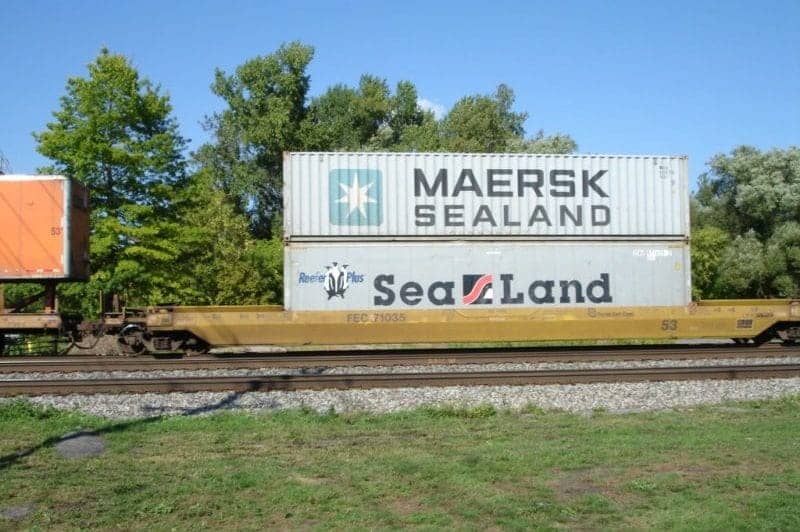Shipping container transport is so ubiquitous that we take it for granted that many of the goods in our home, medicines and food, may have come to us in a humble shipping container.
For around the first 20 years of shipping container transport, perishable goods were a liability. In bright sunshine, the contents of the box would be heated to fierce temperatures with the shipping container effectively becoming a solar oven. In colder climates, the reverse was true with temperatures falling below acceptable levels as things got very cold outside.
Particularly in the modern world, many electronics, pharmaceuticals, and foodstuffs need to be kept within quite tightly defined temperature limits so they do not ripen (in the case of bananas for example), degrade as certain pharmaceuticals do, or simply break down is microelectronics do. In the 1970s things were a bit simpler, with the shipping line Maersk Sea Land originally developing ‘reefer’ shipping containers to stop cacao beans from going mouldy in transit.
Let’s take a brief look at the history of the reefer shipping container, and then at how they work today.
Travelling the world by shipping container

Shortly after graduating from Cornell University in the United States in 1977, fresh faced Barbara Pratt was asked by the company we know today as Maersk to travel the world in a shipping container that was specially fitted out for her to assess how to stop cacao beans from going mouldy. Cacao beans are the essential ingredient for chocolate and the investment was extremely valuable for the shipping line as it could then dominate the world’s cacao transport.
Pratt did several ocean crossings in a specially converted shipping container, with a laboratory in one section, an office section that also had bunkbeds so she didn’t have to travel too far from work – it also had a kitchen with a microwave and laboratory equipment in it, and a diesel generator and diesel tank in another section. Another container also contained computers that had to be monitored closely every day thanks to the early microprocessors that were the computers of the day.
The voyages allowed close analysis of what happened and why perishable goods degraded in the different climates that shipping containers would experience. Ocean voyage by ocean voyage, so the specific criteria for what would become the reefer container was developed. The reefer container was patented by Maersk – something that would benefit and shipping company for many many years as it led the world in temperature controlled global logistics. Needless to say, Barbara Pratt is now in charge of those operations from her base in the United States.
The ABCs of reefer containers
Today there are broadly three types of reefer container. All of them have a commonality in that they have an outside power source that supplies the power to cool and control the climate within the container. On the road or rails, the reefer system is powered up until the point that it needs to change mode, for instance being loaded onto a containership. At each stage of the mode of transfer they are unplugged at one end and plugged in at the other.
The reefer container is easily spotted because of its cooling system at one end that doesn’t look very different to a building’s air conditioning system – pretty much because they are often very similar.
Here are the three types of reefer container:
1. The closed reefer

This is a simple ISO shipping container that has a cooling system bolted on to one end. A computer system monitors the temperature inside. The walls of the container have special installation designed to keep temperatures at a constant inside.
Temperatures can be adjusted to accommodate frozen goods, as well as goods that needs to be chilled such as soft fruit. In this case the air is cooled in much the same way as you would see with an industrial scale air conditioning unit. The coolant is compressed and cooled using a fan type system and as it expands through pipes around the reefer so it draws in the heat of the atmosphere within the container. Now hot, the coolant is compressed and cooled again in a continual cycle.
2. The Modified Atmosphere / Controlled Atmosphere (MA / CA) container

This is another form of insulated container where special equipment will adjust the contents of the atmosphere within. According to Marineinsight, they replace “consumed oxygen using an air exchange system, keeping an ideal atmosphere in equilibrium with the product’s deterioration rate.”
3. Automated Fresh Air Management container (AFAM)

The final type of reefer container is the Automated Fresh Air Management container that, according to Marine Insight, “regulates the air combination by automatically adjusting the scale of fresh air exchange. It works similar to the Controlled Atmosphere refrigerated container, controlling the composition of oxygen, carbon dioxide and others. The controls of the AFAM refrigerated containers can be adjusted to influence and extend the shelf lives of the cargo they carry.”
The development of these three types of containers has blown the market wide open for goods that can be transported by shipping container. We are now at the point where only speed is the limiting factor for whether or not goods go by sea, air, or by rail.
Cacao is a classic commodity that can be transported by shipping container on land and by sea as there is no longer a lack of urgency to get it from tree to factory. Mobile phones such as your iPhone will be transported across Asia by rail when there is not a hurry to get them from China to Europe – and yes mobile phones will need to be in temperature controlled environment due to the vast changes in temperature that that part of the world experiences – from the high 40°C+ to -20°C and below in winter.
Repurposing reefers

One of the most bothersome issues of repurposing a shipping container in a country like Australia is that temperatures can get very hot and very cold within. A shelter is supposed to be somewhere you can escape the climate. While more expensive than a traditional shipping container, the reefer can save you a lot of time and energy in making it a habitable place to live thanks to the internal insulation that comes with it. If you are considering making a bolthole out of a shipping container – perhaps out in the bush – then the reefer container could well be a good building block from which to start out with.
Unfortunately the climate control systems aren’t so easy to repurpose as they require a very different electrical profile to those standardised across logistics. However, in repurposing a container of this type you would look to take advantage of the insulation.
With the right electrical equipment, you could repurpose a reefer as a storage unit, keeping its cooling system intact and in use.
Get in touch with us at Gateway Container Sales to discuss which reefer containers are the best options for your project.




